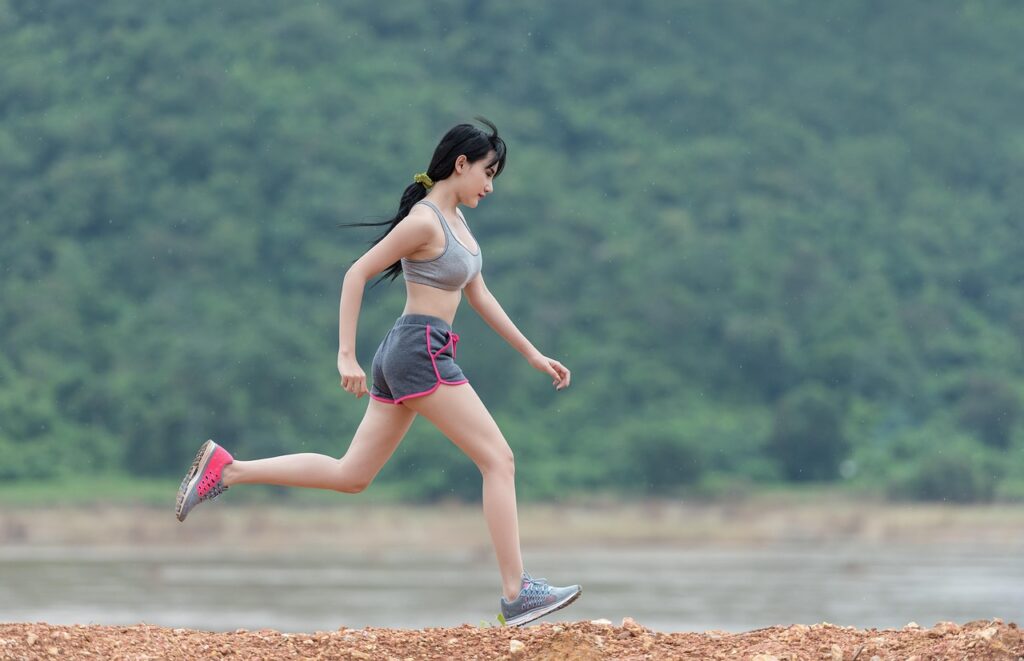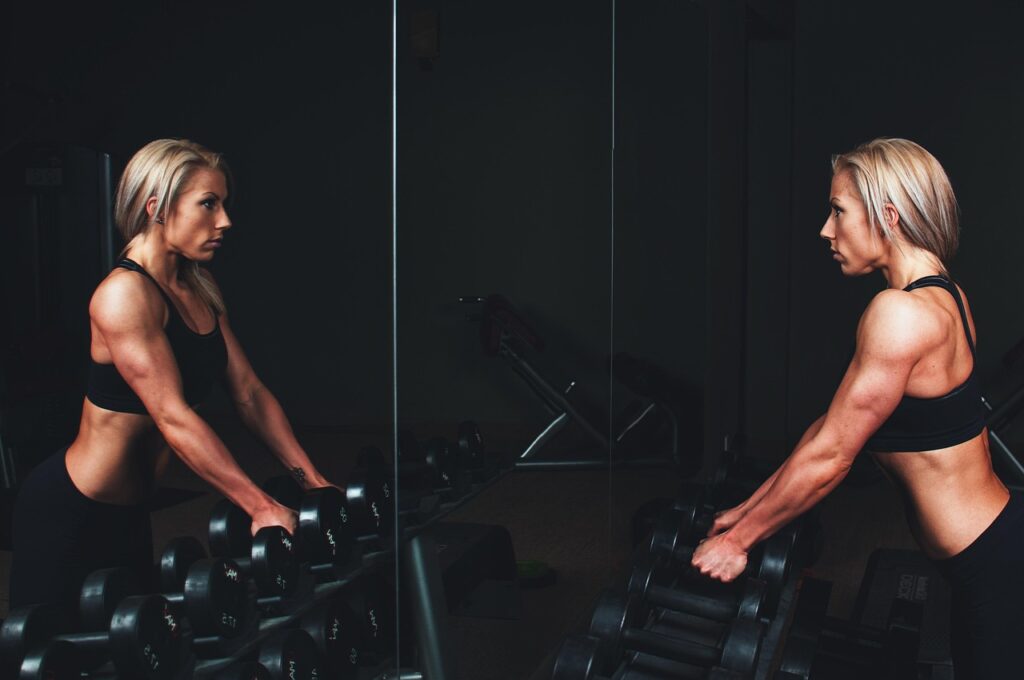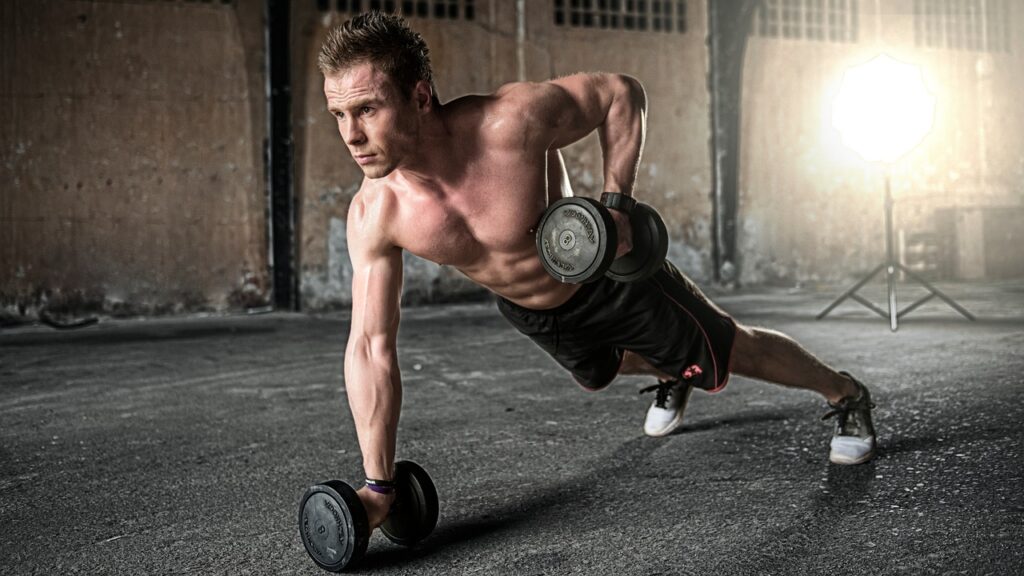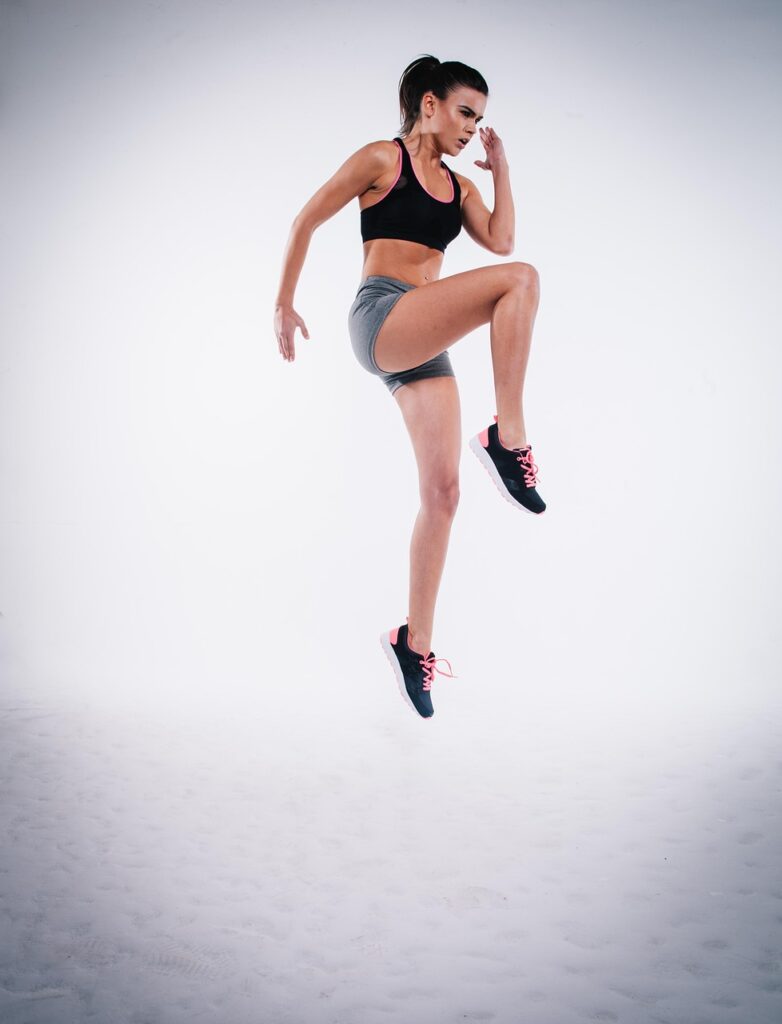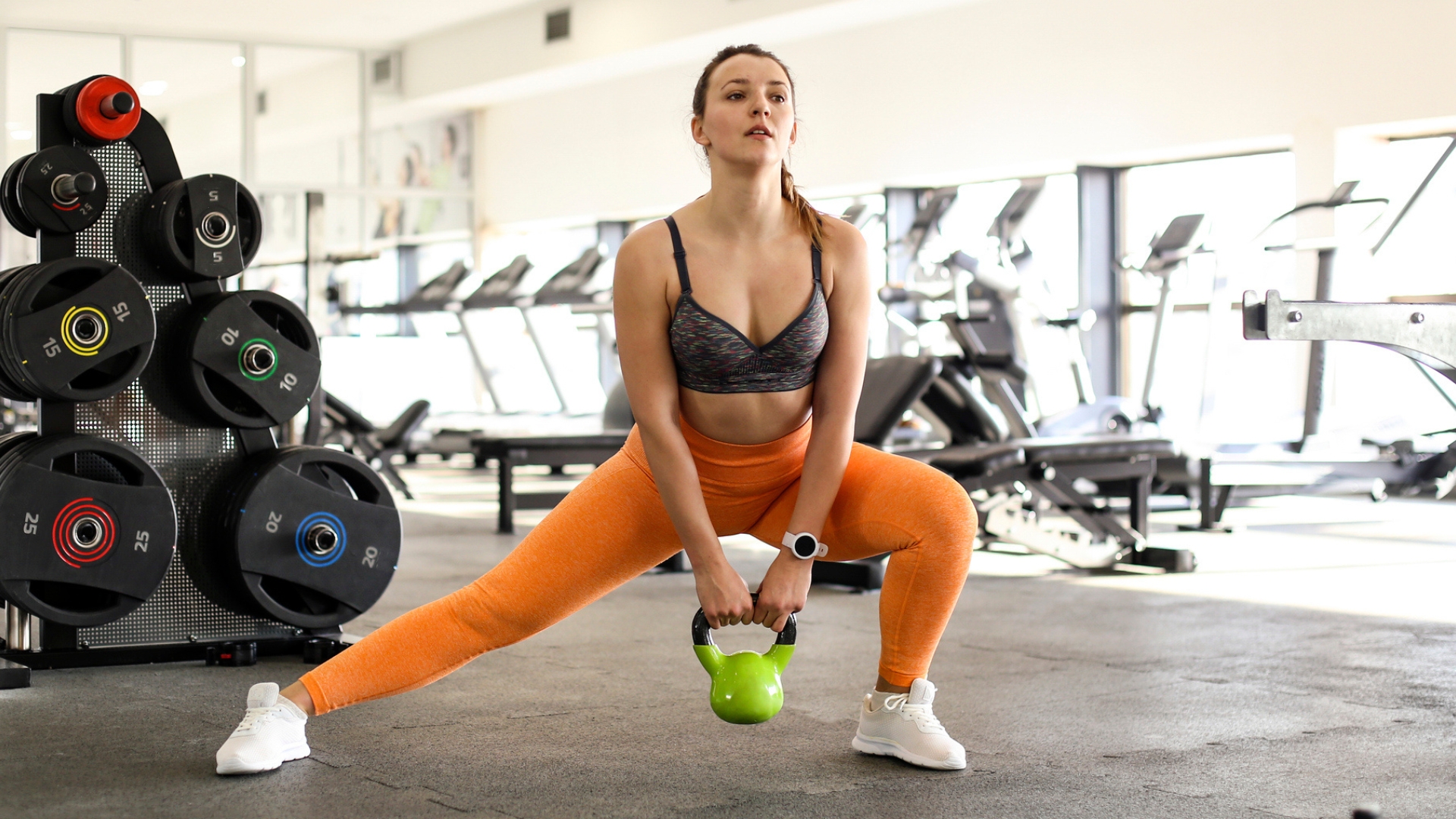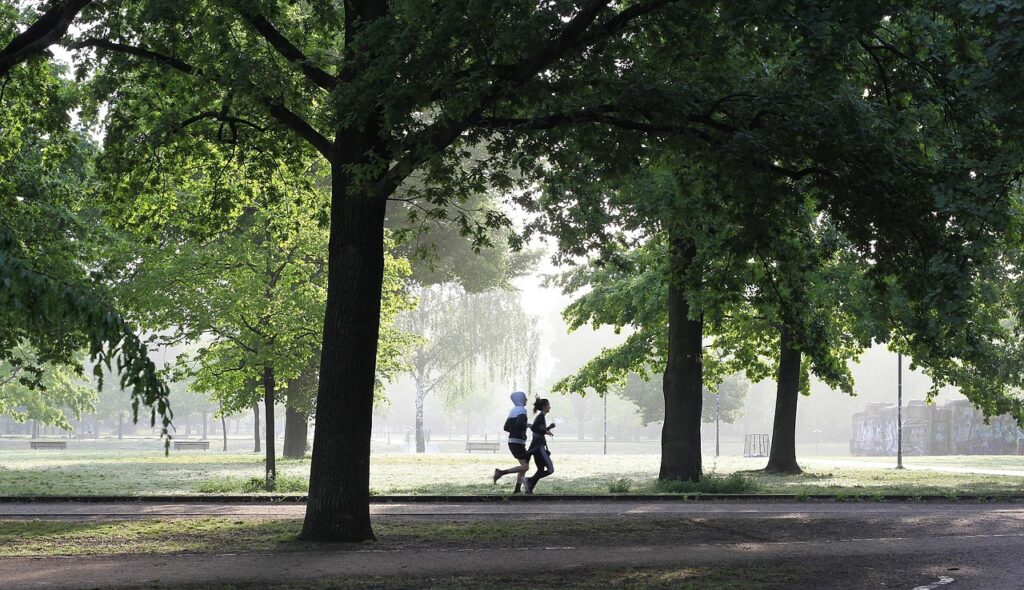
Are you ready to redefine what aging means for your body and mind? For too long, the narrative around getting older has been one of slowing down, taking it easy, and accepting a gradual decline in strength and mobility. But what if we told you that, backed by robust science and expert insights, you could actively reverse many of the effects of aging on your body, often with just a few minutes of focused effort each day?
This isn’t about chasing youth or pushing your body to extremes. Instead, it’s about embracing a smart, strategic approach to fitness, primarily through strength training, that empowers you to maintain your independence, reduce injury risk, and live a more vibrant, energetic life at any age. Whether you’re in your 20s or over 50, the principles remain the same: challenge your muscles progressively, consistently, and intelligently.
We’ve gathered insights from physiotherapists, longevity experts, and even former international Cirque du Soleil performers to bring you a comprehensive guide to exercises that truly make a difference. These aren’t just random movements; they are carefully selected, science-backed exercises designed to target key muscle groups, improve functional strength, and combat age-related muscle loss, known as sarcopenia. Get ready to discover how a simple, consistent routine can unlock a more resilient, capable you.

1. **Squats**Squats are often hailed as a foundational exercise, and for good reason: they are incredibly effective for targeting major muscle groups in your lower body and core. This compound movement engages your hips, quadriceps, hamstrings, and glutes, while also significantly improving trunk stability and endurance. The benefits extend far beyond the gym, translating directly into better performance of everyday activities.
Imagine the ease of picking up an object off the floor or effortlessly getting up from the sofa. Physiotherapist Shrey Vazir emphasizes that squat strength directly supports these common movements, making daily life smoother and more independent. This exercise is a powerhouse for maintaining crucial mobility and functional strength as you age.
To perform a squat, stand with your feet slightly wider than shoulder-width apart. Lower yourself slowly, keeping your chest proud and your weight on your heels, as if sitting back into a chair. You can use a chair to make it easier by sitting on the seat with every rep, or hold a weight to make it harder. For progression, Vazir suggests the “Golden Rule of Rehab,” focusing on consistency and progressive overload, meaning you gradually increase the challenge over time.
Start with two sets of 10 reps, and as you get stronger, you can increase both the reps and the sets. The former Cirque du Soleil performers recommend lowering slowly for 4 counts to build muscle mass and rising quickly in 2 counts to develop power. This progressive approach ensures your muscles are continuously challenged to grow stronger, directly combating muscle loss and improving overall physical performance.
Read more about: 14 Gym Routines Men Over 40 Should Rethink to Build Muscle and Avoid Injury
2. **Modified Crunches**While traditional crunches can sometimes put strain on the neck or lower back, modified crunches offer an accessible and highly effective way to strengthen your core. This exercise specifically targets your abdominal muscles and engages deeper core muscles, including the transverse abdominis and multifidus, which are crucial for spinal support and overall stability. A strong core is fundamental for preventing back pain and improving movement quality throughout your body.
Shrey Vazir’s variation is designed to be accessible for most individuals, providing excellent support for the lower back. This makes it an ideal entry-level core exercise that minimizes discomfort while maximizing effectiveness. No matter which crunch variation you choose, the key is to drive the movement from your core muscles, never pulling with your neck, and to maintain steady breathing throughout the exercise.
To begin, aim for two sets of 15 reps. As your core strength improves, Vazir suggests several ways to progress the exercise. You can add more repetitions, hold a weight to your chest for increased resistance, or focus on lifting your upper back higher off the mat to engage the muscles more intensely. Conversely, if you need to scale back, performing a partial crunch with less range of motion is a great option to build foundational strength.
This exercise, by strengthening your back and core, contributes significantly to better posture and a reduced risk of injury. It’s an essential component of an anti-aging routine, helping you maintain a stable and robust trunk that supports all your movements and contributes to a feeling of decades younger, especially after 50.
Read more about: Unlock a Stronger Core: 12 No-Equipment Exercises for Stability and Strength in Just Minutes a Day

3. **Reverse Lunges**Lunges are an exceptional exercise for building lower-body strength, improving balance, and enhancing hip and knee health. Unlike forward lunges, reverse lunges often feel more stable and place less strain on the knees, making them an excellent choice for individuals focusing on anti-aging benefits. Shrey Vazir highlights that lunges engage your back and abdominal muscles, which helps to relieve stress on your spine and ease back pain.
Beyond pain relief, consistently performing lunges can also increase bone density, a critical benefit as we age and naturally experience a decline in bone mass. The exercise challenges unilateral strength, which means strengthening one side of your body at a time, crucial for navigating stairs, uneven surfaces, and maintaining stability in daily life. This focus on coordination and balance is vital for reducing fall risk, a major concern for older adults.
To perform a reverse lunge, stand tall and then step one foot back into a lunge position. Lower your body until both knees bend to approximately 90 degrees, ensuring your back knee almost reaches the floor and your torso remains upright. Push through your front heel to return to the standing position. If you need extra support initially, hold onto a chair in front of you for balance.
Start with a set of 10 reps on both sides. As your balance and strength improve, you can gradually remove the chair, and then add weight by holding dumbbells. Increase the repetitions and the depth of your lunge to progressively challenge your muscles. The former Cirque du Soleil performers recommend starting with 6-8 reps per leg, emphasizing consistency and gradual progression.
Read more about: EV Owners’ Winter Challenge: Unpacking Why Your Electric Vehicle’s Range Dips in Frigid Temperatures
4. **Modified Push-ups**Push-ups are a fundamental exercise for developing robust core and upper-body strength. They specifically target the muscles responsible for pushing movements, including the frontal deltoids (shoulders), triceps (back of the arms), and pectoral muscles (chest). Building strength in these areas is essential for countless daily activities, such as opening heavy doors, lifting groceries, and even enjoying playtime with grandchildren.
One of the greatest advantages of push-ups is their versatility and scalability, making them suitable for almost any fitness level. For beginners, wall push-ups are an excellent starting point: simply place your hands against a wall and gradually move your feet further away as you get stronger. As you build confidence and strength, you can progress to countertop push-ups, and eventually to floor push-ups, performed either on your knees or toes.
When performing push-ups, aim to lower your chest as close to the floor as possible while keeping your elbows relatively close to your body. This form helps to engage the target muscles effectively and protect your joints. The former Cirque du Soleil performers reveal a secret to progression: every two weeks, challenge yourself by moving to a lower surface. This consistent increase in demand helps your body adapt and grow stronger.
Start with two sets of 10 reps, and gradually increase over time. To make the modified push-up even harder, lift your knees away from the floor and perform push-ups from your toes, maintaining a straight line from your head to your heels. Research, such as that highlighted in The Journal of Athletic Training, even suggests playing with hand position, noting that a narrower arm position can work the triceps harder, demonstrating the depth of this versatile exercise.
Read more about: Beyond 40: Evidence-Based Strategies for Scientific Weight Management and Metabolic Health

5. **Glute Bridges**Glute bridges are a fantastic exercise that often doesn’t get the credit it deserves, especially when it comes to combating back pain and hip weakness, two common issues that can significantly limit mobility as we age. This simple yet powerful movement effectively targets your glutes, which are key for lower body power, stability, and supporting your lower back. A strong set of glutes is your secret weapon against age-related mobility challenges.
When performed regularly, glute bridges can be incorporated into your daily routine, even as a standalone exercise during spare moments. Shrey Vazir states that being able to perform 10 to 20 reps is the gold standard for everyday activities, underscoring its functional importance. This exercise directly correlates with maintaining independence in later years, as a 2023 study referenced by the former Cirque du Soleil performers affirms.
To execute a glute bridge, lie on your back with your knees bent and feet flat on the floor, hip-width apart. Press through your heels to lift your hips off the floor, creating a straight line from your knees to your shoulders. Remember to give your glutes a healthy squeeze at the top of the movement and engage your core muscles, holding the position for 2-3 seconds before slowly lowering back down. Avoid arching your lower back as you lift your hips higher.
For increased challenge, you can add weight to your hips, such as a dumbbell or a plate. Alternatively, try a single-leg glute bridge variation by lifting one leg away from the floor. This variation engages more of your outer glutes and works one side of your body at a time, further enhancing stability and strength. Aim for one to two sets, gradually building your endurance and strength.
Read more about: Unlock a Healthier Future: Your Essential Guide to Low-Impact Exercises for Joint Health Over 60
6. **The Core Foundation (Dead Bug)**The Dead Bug is an often-underestimated exercise that is exceptionally effective for building deep core stability. Unlike crunches that focus on flexion, the Dead Bug emphasizes anti-extension and controlled movement, which is paramount for preventing back pain and improving overall movement quality. It helps to strengthen the intrinsic core muscles that stabilize your spine, contributing to better posture and a reduced risk of injury in all your daily activities.
This exercise focuses on coordination and control, teaching your core to stabilize your trunk while your limbs move. This foundational core strength is essential for everything from bending over to pick something up to maintaining balance during more dynamic movements. The former Cirque du Soleil performers highlight its importance for deep core stability that prevents back pain, making it a crucial component of any anti-aging fitness regimen.
To perform the Dead Bug, lie on your back with your arms reaching straight up towards the ceiling and your knees bent at a 90-degree angle directly over your hips, mimicking a “dead bug” posture. The key is to keep your lower back flat against the floor throughout the entire movement. Engage your core muscles as if bracing for a gentle punch, and maintain this engagement.
Slowly lower one arm overhead towards the floor while simultaneously extending the opposite leg straight out, hovering it just above the floor. Control is more important than speed here. Hold this extended position for 3-5 seconds, really focusing on keeping your lower back pressed into the floor and your core engaged, then slowly return to the starting position. Alternate sides, ensuring each repetition is controlled and deliberate, building not just strength but also proprioception and body awareness.
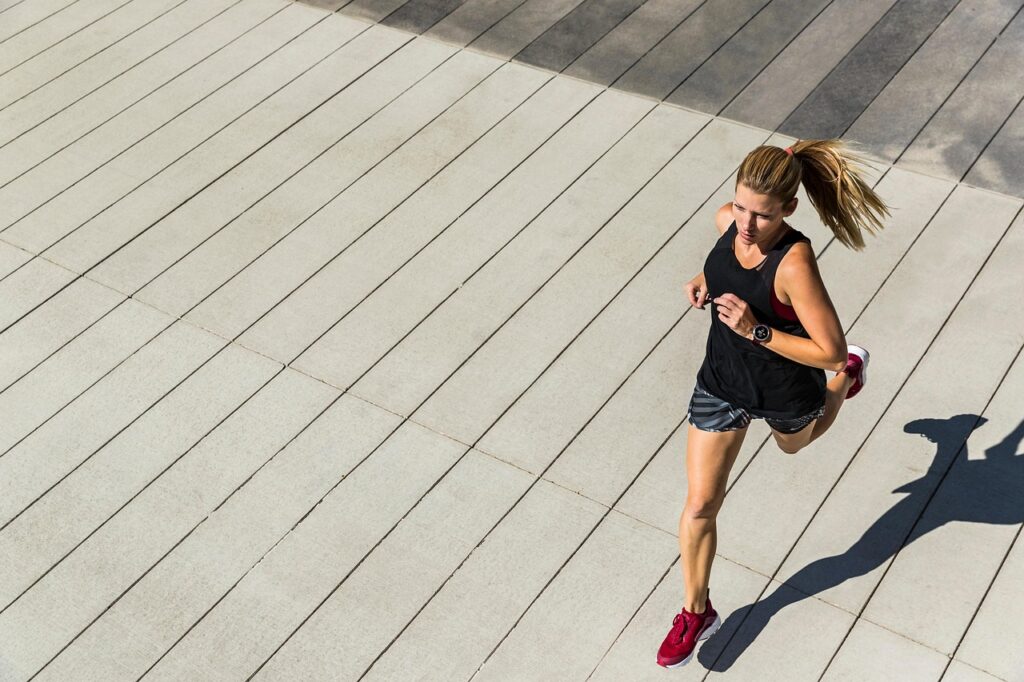
7. **March In Place**Often seen as a simple warm-up, March In Place is a highly effective, low-impact exercise that offers significant benefits for circulation, core engagement, and full-body preparation, particularly valuable in an anti-aging routine. This accessible movement primes your entire body, gently elevating your heart rate and preparing your muscles and joints for more strenuous activity. It’s a fantastic way to boost circulation, ensuring essential nutrients reach all your tissues.
Fitness professional Theresa Rowe emphasizes that March In Place warms up the entire body and actively engages the shoulders and core. This engagement is crucial for developing and maintaining the stability needed for daily tasks and preventing falls. The rhythmic nature of marching also subtly improves coordination and balance, two aspects of physical fitness that naturally decline with age if not consistently challenged.
To perform this exercise, stand tall with good posture, reaching your arms overhead. Begin marching in place, lifting one knee up towards your chest as high as you comfortably can. As you lift each knee, actively draw in your abdominal muscles tightly. This ensures that your core is engaged throughout the movement, providing additional stability and strengthening those vital trunk muscles. The overhead arm reach further engages your shoulders and upper back.
Continue performing this exercise for 1 minute. The beauty of March In Place lies in its simplicity and adaptability; it can be done anywhere, anytime, with no equipment required. It serves as an excellent starting point for any workout, transitioning your body from a sedentary state to an active one, and is particularly beneficial for women over 50 as part of an invigorating 10-minute circuit session designed to boost circulation, strengthen key muscles, and improve coordination, all while being joint-friendly and energizing.
As we continue our journey to unlock a more resilient and capable you, remember that the power to defy aging lies not in extreme measures, but in consistent, targeted effort. The next set of exercises builds upon the foundational movements, integrating more dynamic, multi-joint actions that further enhance strength, balance, and overall well-being. These movements are designed to challenge your body in new ways, ensuring a comprehensive approach to anti-aging fitness that keeps you vibrant and independent.
Whether you’re looking to improve your daily mobility, reduce the risk of falls, or simply feel more energetic, these exercises are your allies. They are carefully selected to provide actionable advice and practical tips, presented in a clear and accessible way, empowering you to take control of your physical health. Let’s dive into the next chapter of your anti-aging fitness transformation, focusing on exercises that will make you feel decades younger.
Read more about: A Legacy Forged in Iron and Innovation: The Extraordinary Life of the Late George Foreman, From Olympic Gold to Entrepreneurial Empire

8. **Dumbbell Squat to Press**The Dumbbell Squat to Press is a dynamic, full-body exercise that masterfully combines lower-body strength with upper-body power and coordination. This compound movement not only targets your glutes, quads, and hamstrings during the squat phase but also engages your shoulders and triceps as you press the dumbbells overhead. It’s an excellent way to elevate your heart rate, build overall strength, and improve your body’s ability to move efficiently through space.
Performing this exercise demands significant core engagement, which is crucial for maintaining stability throughout the entire movement. As you drive through your heels and explode out of the squat, your core acts as the central pillar, connecting the powerful leg drive to the overhead press. This synchronized action makes it incredibly functional, mimicking real-life movements like lifting heavy objects from the ground and placing them onto a shelf.
To perform the Dumbbell Squat to Press, begin by standing tall with your feet shoulder-width apart, holding a dumbbell in each hand at shoulder level with palms facing inward. Lower yourself into a squat, bending your knees and pressing your hips back until your thighs are parallel to the floor. Then, drive through your heels, extending your legs as you simultaneously press the dumbbells overhead in a smooth motion. Once the weights are overhead, lower them back to shoulder height with control before returning to the squat position. Perform this exercise for 1 minute, focusing on fluid, controlled movements.
For those new to the movement, start with very light dumbbells or even just your body weight, practicing the squat and then adding a vertical arm extension without weights. As your strength and coordination improve, you can gradually increase the weight of the dumbbells. Consistency is key here; focusing on perfect form will yield better results and prevent injury, making this a cornerstone for building robust strength for years to come.
Read more about: 14 Gym Routines Men Over 40 Should Rethink to Build Muscle and Avoid Injury
9. **Reverse Lunge With Bicep Curl**This exercise is a fantastic multi-tasker, expertly blending lower-body and arm strength while simultaneously challenging your coordination and balance. As fitness professional Theresa Rowe notes, the Reverse Lunge With Bicep Curl is specifically designed to target the muscle groups in your legs and arms in a coordinated fashion, providing a comprehensive strengthening experience that translates directly into improved daily function. It’s a powerful move for cultivating a strong, stable physique.
By combining a reverse lunge with a bicep curl, you are engaging large muscle groups in your lower body – quadriceps, hamstrings, and glutes – alongside your biceps. This dual-action approach not only maximizes your workout efficiency but also enhances your body’s ability to perform compound movements, which are integral to maintaining independence as you age. The unilateral nature of the lunge further refines your balance, an essential component for reducing fall risk.
To execute this exercise, stand tall, holding a dumbbell in each hand with your arms extended downwards. Step one foot back into a reverse lunge, lowering your body until both knees are bent at approximately 90 degrees. As you rise back up from the lunge, simultaneously curl the dumbbells up towards your chest, squeezing your biceps at the top. Lower the dumbbells with control as you prepare for the next lunge. Alternate legs, performing the exercise for 1 minute.
To progress this movement, begin with lighter dumbbells or even no weights, focusing on mastering the lunge and curl individually before combining them. Once comfortable, increase the weight of your dumbbells incrementally. You can also focus on a deeper lunge or a slower, more controlled bicep curl to increase the time under tension, further challenging your muscles and enhancing their growth.
Read more about: From Glory to Pain: Decoding the ‘Worst’ Bodybuilding Injuries and the Nuance of Athletic Catastrophe
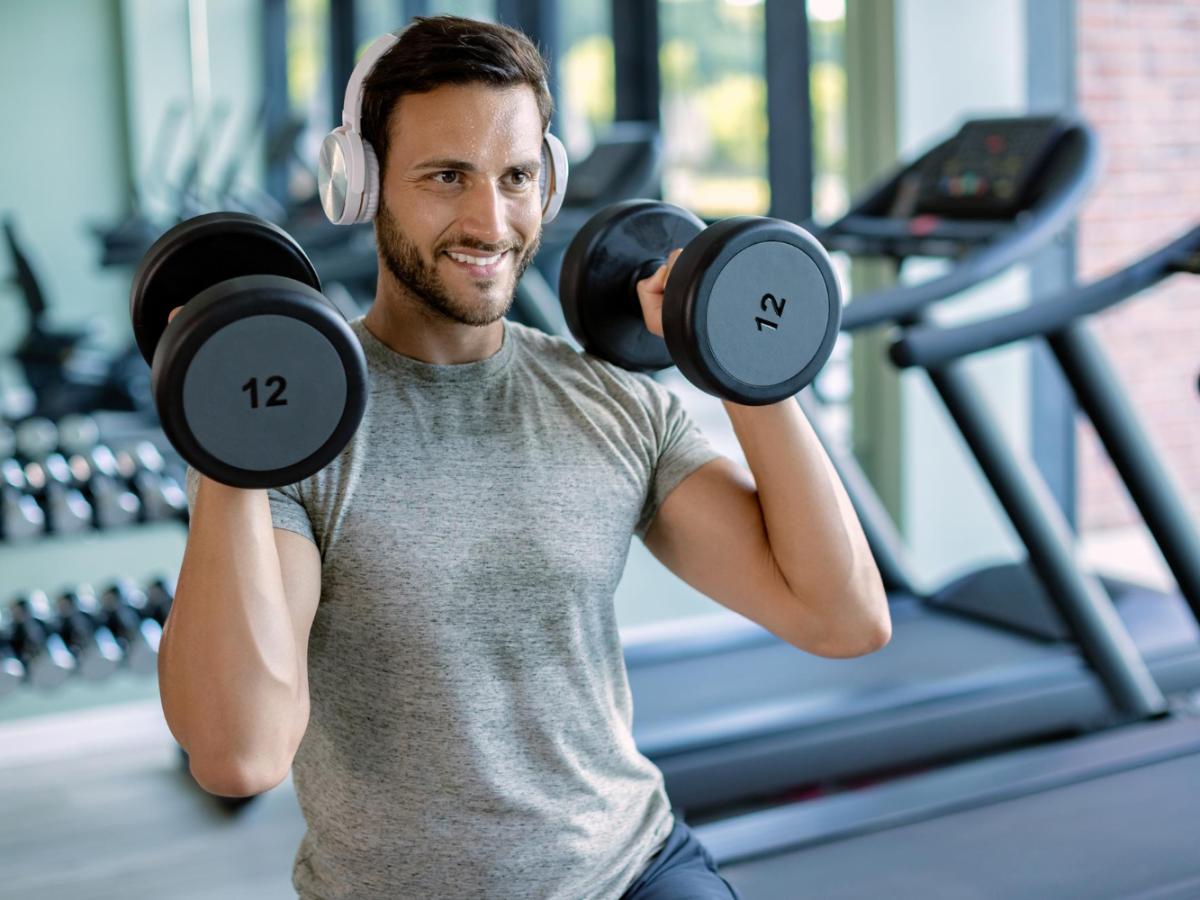
10. **Tricep Kickback and Calf Raises**Often overlooked, the Tricep Kickback and Calf Raises offer a highly effective way to strengthen and tone two crucial muscle groups: the triceps and the calves. According to Theresa Rowe, this combined movement specifically targets the back of the arms and enhances total-body endurance, while simultaneously strengthening the calves. These muscles are vital for everyday movements, from pushing open a door to walking and climbing stairs with confidence.
Strong triceps contribute significantly to upper body strength, enabling tasks that require pushing or extending your arms, and supporting shoulder stability. Concurrently, powerful calves are instrumental for ankle stability, propulsion during walking, and preventing falls, which is especially important as we age. Integrating these two movements into one seamless exercise provides a comprehensive benefit to your overall physical capability and endurance.
To perform this move, hold a dumbbell in each hand with palms facing your body. Hinge forward slightly at your hips, keeping your back flat and core engaged. Bend both elbows to bring the weights by your sides. From this position, extend your elbows to press the dumbbells straight back, squeezing your triceps, while simultaneously rising onto the balls of your feet for a calf raise. Hold briefly at the top to feel the squeeze in both your triceps and calves, then slowly lower your heels and the dumbbells back to the starting position. Perform this exercise for 1 minute.
For progression, start with lighter dumbbells to perfect your form, ensuring you feel the engagement in both muscle groups. As you build strength, gradually increase the weight of the dumbbells. You can also increase the duration of the squeeze at the top of the movement or perform more repetitions within the minute to further challenge your muscles and build endurance. This exercise is key for maintaining graceful, functional movement.
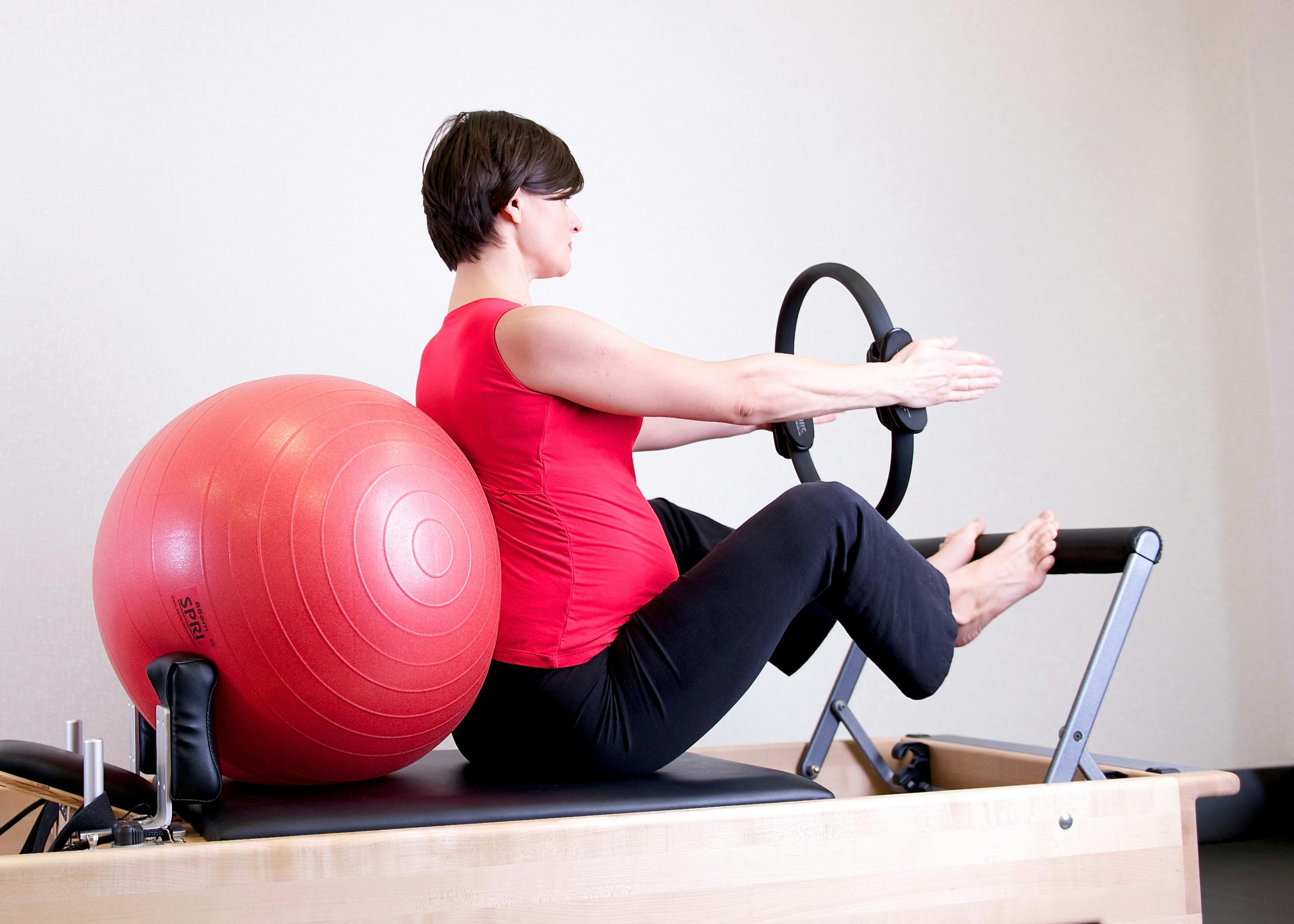
11. **Stability Ball Chop**The Stability Ball Chop is an exceptional exercise for developing rotational strength and control, engaging both the core and shoulders simultaneously. As Theresa Rowe aptly describes, it’s a dynamic movement that helps improve your body’s ability to generate power through rotation, a fundamental aspect of many daily activities like reaching, twisting, or swinging. This targeted action strengthens the muscles responsible for stabilizing your trunk and protecting your spine.
This exercise is particularly beneficial for improving the coordinated movement between your upper body and lower body, fostering greater functional strength. By utilizing a stability ball, you introduce an element of instability, which further challenges your core muscles to maintain balance and control throughout the chopping motion. This comprehensive engagement contributes to better posture, reduced risk of injury, and enhanced athletic performance in everyday life.
To perform the Stability Ball Chop, stand tall with your feet shoulder-distance apart, holding a stability ball with both hands above one shoulder. Inhale as you prepare for the movement. Then, exhale as you chop the ball diagonally downwards across your body towards your opposite foot, bending your knees as you do so, as if you’re chopping wood. Reverse the motion with control, bringing the ball back to the starting position above your shoulder. Ensure your core remains engaged throughout to protect your back. Perform this exercise for 1 minute, alternating sides or completing one side before switching.
To progress, focus on increasing the range of motion and the speed of the chop while maintaining strict control. If you find the stability ball too light, you can transition to a medicine ball for added resistance, which will further intensify the challenge on your core and shoulders. Consistent practice with this exercise will significantly improve your rotational power and overall core stability, making everyday movements feel more effortless.
Read more about: Unearthing 15 Unsung 90s Sedans: Reliable Transport Gems for Today’s Commuters
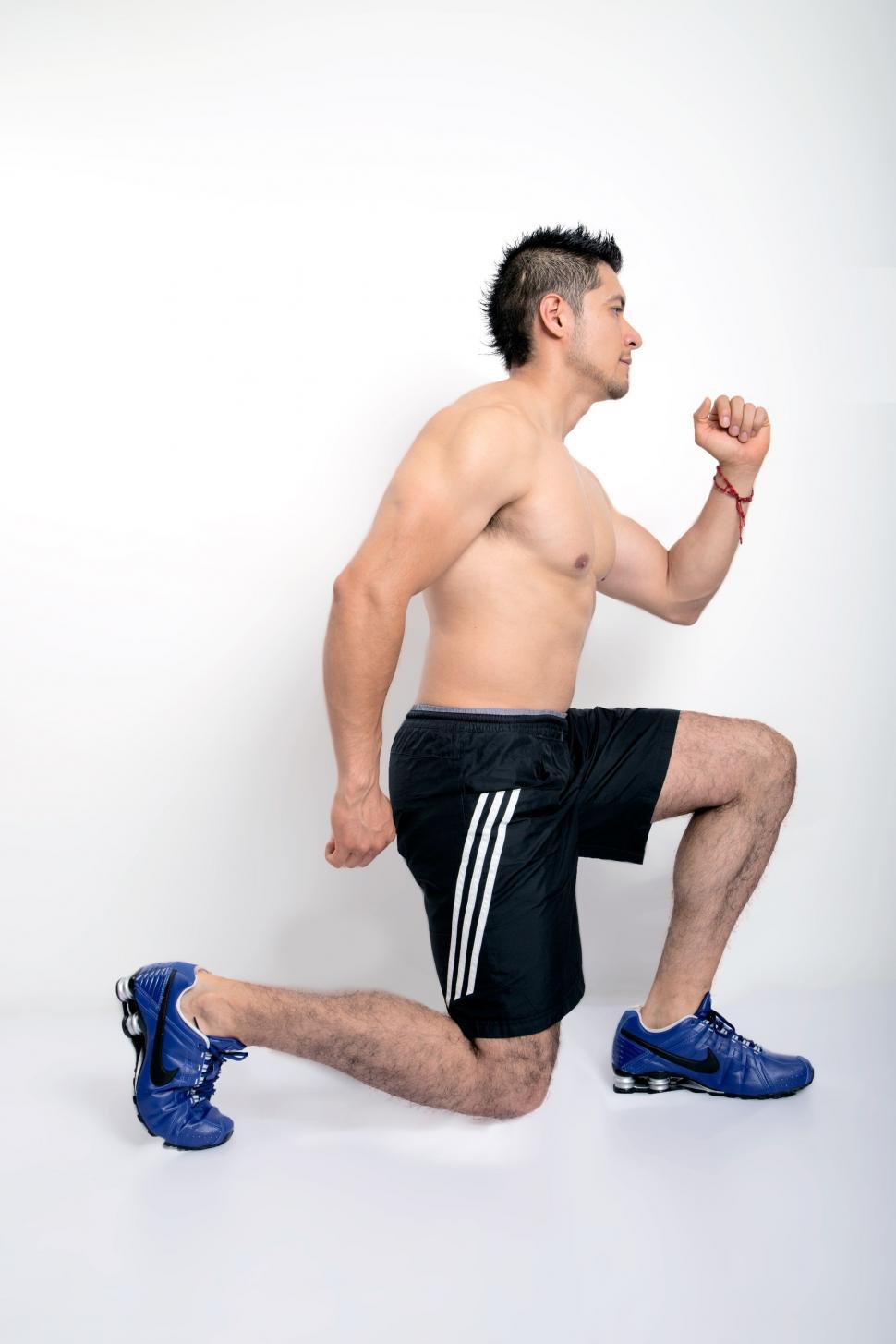
12. **Reverse Lunge and Rotate Ball**The Reverse Lunge and Rotate Ball is a powerful compound exercise that strengthens the legs and core while profoundly training balance and stability through gentle rotation, as highlighted by Theresa Rowe. This multi-planar movement challenges your body in a way that closely mimics real-life activities, where you often need to move and twist simultaneously. It’s an invaluable addition to any anti-aging routine, promoting agility and reducing the likelihood of falls.
By incorporating a rotational element with the lunge, this exercise engages not only your major leg muscles and glutes but also your oblique muscles, which are crucial for core stability and preventing back pain. The act of twisting your torso while maintaining a lunge position demands significant coordination and control, refining your proprioception—your body’s awareness of its position in space. This holistic approach builds robust functional strength.
To begin this exercise, stand tall, holding a medicine ball or stability ball with both hands in front of your chest. Step one foot back into a reverse lunge, lowering your body until both knees are bent at approximately 90 degrees. As you maintain the lunge, gently twist your torso forward toward your front leg, bringing the ball with you. Return to the center, then push off your back foot to return to the standing position. Repeat on the other side, alternating legs throughout the 1 minute duration of the exercise.
For progression, consider using a slightly heavier medicine ball to increase the resistance on your core and arms. You can also increase the depth of your lunge or the range of your torso twist, always ensuring that the movement remains controlled and stable. The emphasis should always be on quality of movement over speed, ensuring maximum benefit for your legs, core, and balance.
Read more about: 14 Gym Routines Men Over 40 Should Rethink to Build Muscle and Avoid Injury
13. **Side Squat and Arnold Press**Combining lower-body power with shoulder mobility and coordination, the Side Squat and Arnold Press is an excellent full-body exercise for enhanced functional strength. Theresa Rowe emphasizes that this move integrates lateral movement—stepping out to the side—which is often neglected in traditional forward-and-back exercise routines, along with the dynamic upper body action of an Arnold Press. This multi-directional challenge is key for improving overall athleticism and mobility as you age.
The side squat targets your inner and outer thigh muscles, as well as your glutes, improving hip mobility and stability crucial for navigating varied terrain. Simultaneously, the Arnold press, a unique shoulder press variation that involves rotating the dumbbells as you lift, works all three heads of the deltoid muscle, promoting comprehensive shoulder strength and flexibility. This synergistic effect makes it a powerhouse for maintaining strength and agility.
To perform the Side Squat and Arnold Press, stand tall with your feet hip-width apart, holding a dumbbell in each hand at shoulder level with palms facing in. Step out to your right side and lower into a side squat, pressing your hips back until your thighs are parallel to the floor, ensuring your left leg remains straight. As you press off your right foot to rise back to standing, simultaneously rotate your palms outward and press the weights overhead in an Arnold press motion. Lower the weights to shoulder level with control. Repeat on the other side, stepping out to the left. Perform this exercise for 1 minute, alternating sides.
To progress, start with lighter dumbbells or even just bodyweight for the side squat, focusing on depth and lateral stability. As you gain strength, increase the dumbbell weight. You can also challenge yourself by performing the movements more slowly and deliberately, focusing on the muscle engagement during both the squat and the press. This exercise is fantastic for building strength and coordination that makes daily life feel more fluid.
Read more about: From Glory to Pain: Decoding the ‘Worst’ Bodybuilding Injuries and the Nuance of Athletic Catastrophe
14. **Knee Drive and Lateral Raise**The Knee Drive and Lateral Raise is a fantastic compound exercise that targets the core, arms, and balance all at once, specifically encouraging fluid, stable movement. Theresa Rowe highlights its importance in developing whole-body control and stability. This exercise is particularly effective for enhancing single-leg balance, which is a critical skill for preventing falls and maintaining independence as we get older, directly contributing to a sense of youthful agility.
By simultaneously lifting one knee and performing a lateral arm raise, you engage your core muscles to stabilize your trunk, your hip flexors for the knee drive, and your deltoids for the arm movement. The unilateral stance further challenges your proprioception, improving your body’s awareness and control. This combination makes it a highly functional movement, mirroring actions like stepping over obstacles or reaching for something overhead while maintaining your balance.
To execute the Knee Drive and Lateral Raise, stand tall, holding a dumbbell in each hand at your sides with palms facing in. Maintain a tall chest and an activated core. Shift your body weight onto your left leg, keeping a slight bend in that knee for stability. Now, drive your right knee up towards your chest while simultaneously lifting your arms out to the sides until they reach shoulder height. Use control to lower your arms and leg back to the starting position. Repeat on the other side. Perform this exercise for 1 minute, alternating sides.
For progression, begin with no dumbbells or very light ones, focusing on mastering the balance and coordination of the movement. As you become more stable, gradually increase the weight of the dumbbells for the lateral raise. You can also hold the knee drive and lateral raise at the top for a few seconds to increase the time under tension and further challenge your balance. This exercise is a testament to how integrated movements can dramatically improve your overall physical capacity.
Read more about: Beyond Protein Shakes: Your Definitive Guide to Halting Muscle Loss After 50 with Essential Bodyweight Exercises and Smart Strategies
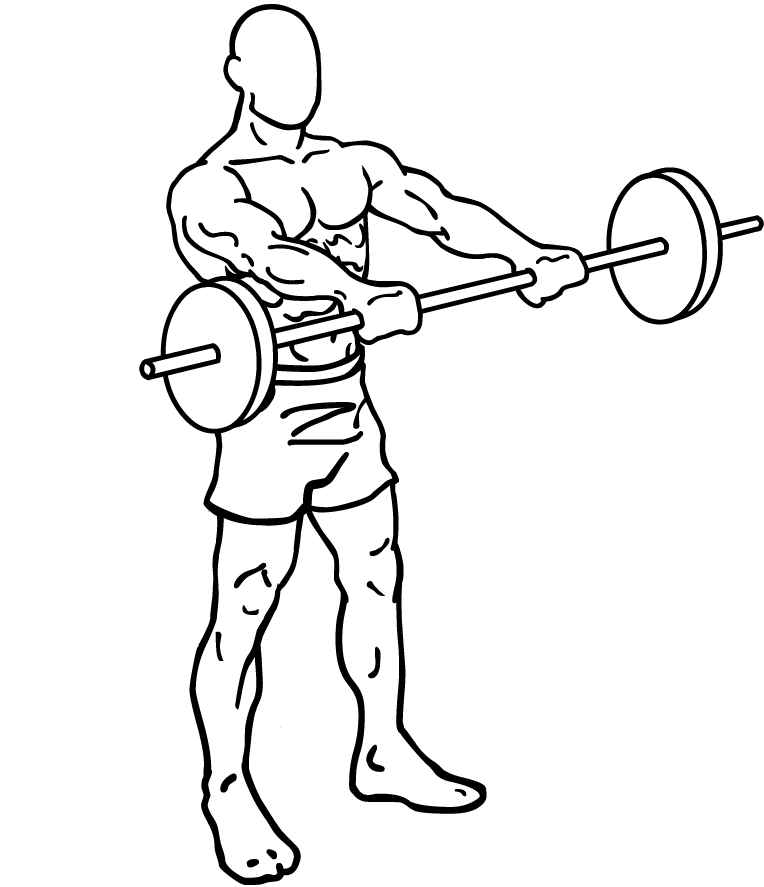
15. **Squat and Front Raise**The Squat and Front Raise is a highly effective exercise for improving leg strength, shoulder control, and posture through controlled motion, as noted by Theresa Rowe. This compound movement efficiently targets multiple muscle groups, providing a comprehensive lower and upper body workout in one fluid action. It’s an ideal exercise for those looking to build foundational strength that supports everyday activities and contributes to a more upright, confident posture.
By combining the powerful lower-body engagement of a squat with the controlled shoulder work of a front raise, you’re not only building muscle in your legs and shoulders but also enhancing your core stability. The coordinated effort required to smoothly transition from a squat to a standing position while simultaneously lifting weights to shoulder height helps improve overall body mechanics and muscular endurance. This makes it an excellent choice for maintaining functional strength and vitality.
To perform the Squat and Front Raise, stand tall with your feet shoulder-width apart, holding a dumbbell in each hand in front of your thighs with palms facing your body. Lower into a squat, pressing your hips back as if sitting into a chair. As you press back up to a standing position, simultaneously lift the dumbbells straight in front of you to shoulder height, keeping your arms relatively straight but not locked. Lower the weights back to your thighs with control as you prepare for the next squat. Perform this exercise for 1 minute.
To progress, start with lighter dumbbells or even bodyweight, focusing on perfecting the squat form before adding the front raise. As your strength increases, you can gradually use heavier dumbbells. You can also increase the depth of your squat or perform the movements more slowly, especially the lowering phase of the front raise, to maximize muscle engagement and promote growth. This exercise is a cornerstone for building balanced strength and improving your overall physique.
Read more about: Unearthing the Untamed: 2025’s Premier Factory Off-Road Vehicles Engineered for American Terrain
Embracing these strength training exercises, consistently and with progressive challenge, is not just about building muscle; it’s about reclaiming your vitality, independence, and zest for life. This 10-minute daily routine, incorporating both foundational and dynamic movements, offers a scientifically backed pathway to combating the effects of aging, strengthening your body, and sharpening your mind. You now have a comprehensive roadmap to build lasting strength, improve balance, and enhance your overall well-being. So, take these insights, integrate them into your daily life, and prepare to feel the transformative power of progressive strength training, proving that age truly is just a number when it comes to living your strongest, most vibrant life.

